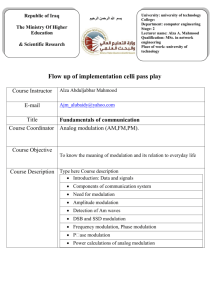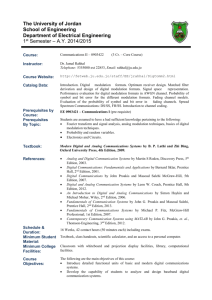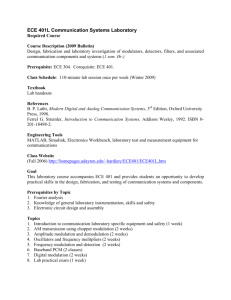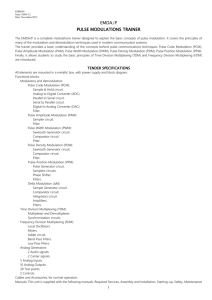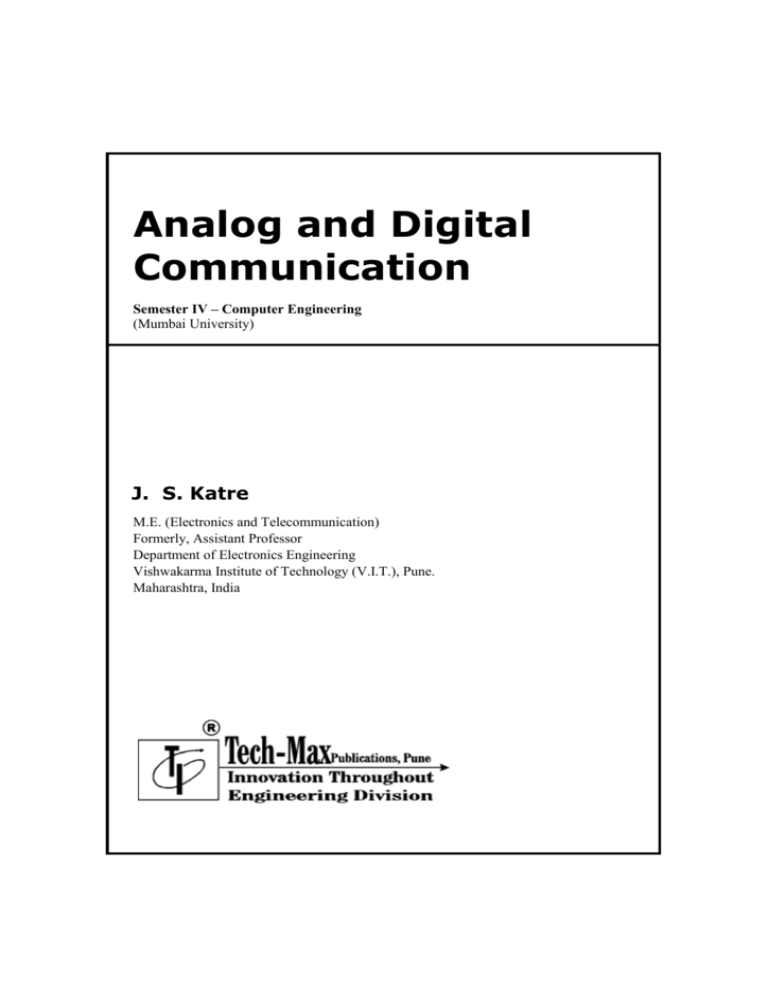
Analog and Digital
Communication
Semester IV – Computer Engineering
(Mumbai University)
J. S. Katre
M.E. (Electronics and Telecommunication)
Formerly, Assistant Professor
Department of Electronics Engineering
Vishwakarma Institute of Technology (V.I.T.), Pune.
Maharashtra, India
Analog and Digital Communication
(Semester IV - Computer Engineering, Mumbai University)
J. S. Katre
Copyright © by Author. All rights reserved. No part of this publication may be reproduced, copied, or
stored in a retrieval system, distributed or transmitted in any form or by any means, including
photocopy, recording, or other electronic or mechanical methods, without the prior written permission
of the publisher.
This book is sold subject to the condition that it shall not, by the way of trade or otherwise, be lent,
resold, hired out, or otherwise circulated without the publisher’s prior written consent in any form of
binding or cover other than which it is published and without a similar condition including this
condition being imposed on the subsequent purchaser and without limiting the rights under copyright
reserved above.
First Printed in India
: January 2009
Second Revised Edition : January 2010
Third Revised Edition : January 2011
This edition is for sale in India, Bangladesh, Bhutan, Maldives, Nepal, Pakistan, Sri Lanka and
designated countries in South-East Asia. Sale and purchase of this book outside of these countries is
unauthorized by the publisher.
Printed at : Image Offset, Survey No. 10/1/1, Dhayari Gaon, Near Kailas Jeevan Factory,
Pune – 41,Maharashtra State, India. Phone : 020 - 24392059
ISBN : 978-81-8492-035-2
Published by
Tech-Max Publications
Head Office : B/5, First floor, Maniratna Complex, Taware Colony, Aranyeshwar Corner,
Pune - 411 009. Maharashtra State, India
Ph : 91-20-24225065, 91-20-24217965. Fax 020-24228978.
Email : info@techmaxbooks.com,
Website : www.techmaxbooks.com
(Book Code : M147)
Price Rs. 385/-
Syllabus…
1.
Introduction :
Basics of communication systems, modulation and demodulation, analog and digital modulation,
noise in communication system, various noise parameters.
(Refer Chapters 1 and 2)
2.
Analog Modulation and Demodulation :
Different types of analog modulation, amplitude modulators and demodulators, frequency
modulators and demodulators, phase modulation and demodulation, amplitude modulation and
frequency modulation receivers.
(Refer Chapter 3)
3.
Pulse Analog Modulation :
Sampling theorem for low-pass and band-pass filters, sampling technique principle, generation,
demodulation and spectrum, types of pulse analog modulation, generation and detection of pulse
amplitude modulation (PAM). pulse width modulation (PWM) and pulse position modulation
(PPM), principles of time division multiplexing (TDM) and frequency division multiplexing
(FDM).
(Refer Chapters 4 and 5)
4.
Digital Modulation Techniques :
Discrete messages, concept of information, average information, information rate, Shannon’s
theorem, channel capacity, capacity of Gaussian channel, pulse code modulation (PCM), delta
modulation (DM), adaptive delta modulation (ADM) - transmission systems.
(Refer Chapters 6 and 7)
5.
Base Band Modulation :
PCM waveform types, M-ary pulse modulation, base band signal receiver, detection of binary
signals in Gaussian noise, intersymbol interference (ISI) and equalization.
(Refer Chapter 8)
6.
Bandpass Modulation and Demodulation :
Types of bandpass modulation, phase shift keying - BPSK, DPSK, DEPSK, QPSK,
M - ary PSK, amplitude shifting - BASK, QAM, frequency shift keying – BFSK, M-ary, FSK.
(Refer Chapter 9)
7.
Channel Coding :
Types of error control, linear block codes, errors detection and correction capacity, cyclic codes,
convolution codes.
(Refer Chapter 10)
Preface
My dear students,
I am extremely happy to present this book of “Analog and
Digital Communication” for you. I have divided the subject into
small chapters so that the topics can be arranged and understood
properly. The topics within the chapters have been arranged in a
proper sequence to ensure smooth flow of the subject.
A large number of solved examples have been included.
So, I am sure that this book will cater all your needs for this
subject.
I am thankful to Shri. Pradeep Lunawat and Shri. Sachin
Shah for the encouragement and support that they have extended.
I am also thankful to the staff members of Tech-Max & Katre
Publications and others for their efforts to make this book as good
as it is. I have jointly made every possible efforts to eliminate all
the errors in this book. However if you find any, please let us
know, because that will help me to improve further.
I am also thankful to my family members and friends for
patience and encouragement.
- J. S. Katre



